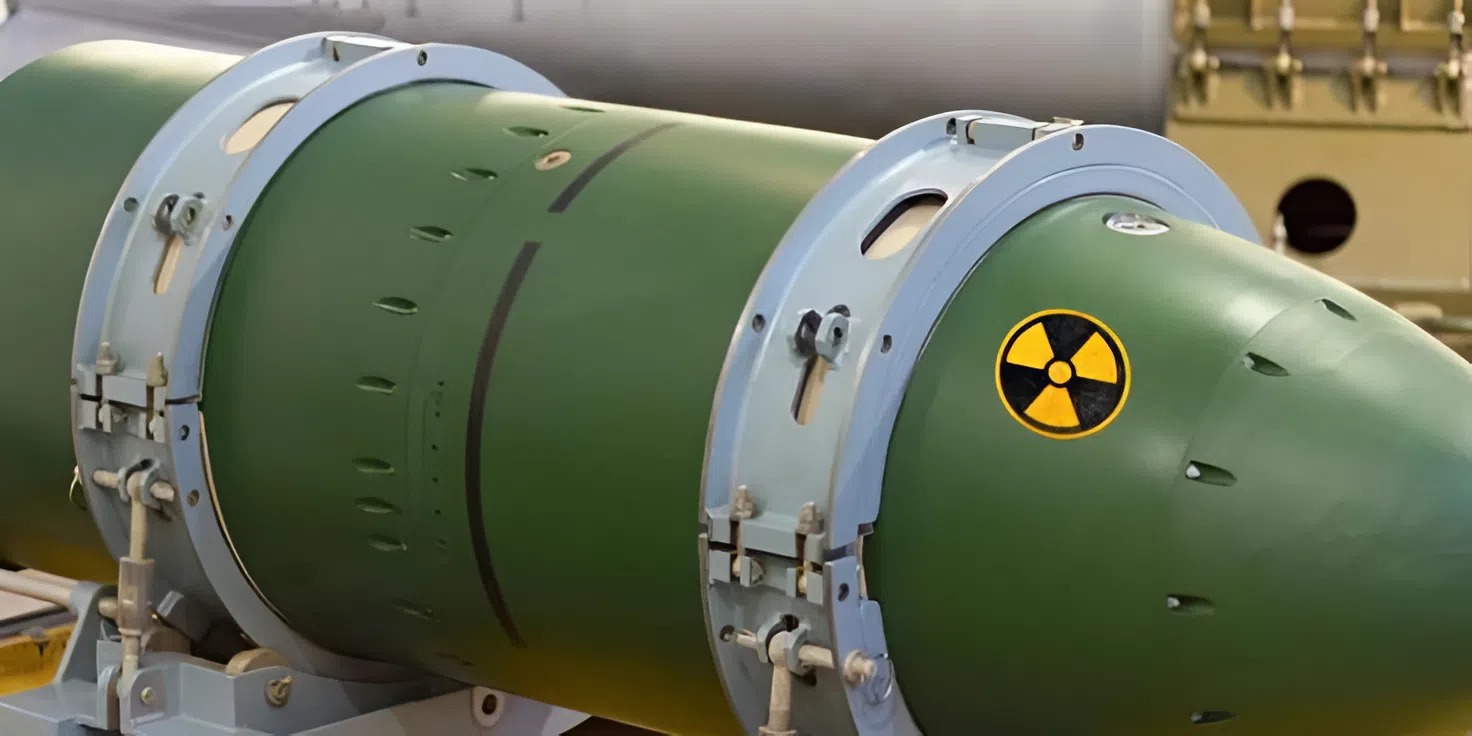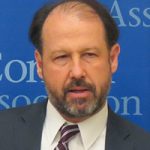Eighty years into the nuclear weapons age, nuclear risks are growing once again.
Human civilization remains precariously tethered to the existence of nuclear weapons and the threat they might be used again—in South Asia, in Europe, between the United States and Russia, in East Asia between the United States and China, or on Korean Peninsula.
Dangerous, nuclear deterrence relationships exist between and among the world’s nine nuclear armed states. New technologies, particularly artificial intelligence, complicate the situation. At some point, it is likely the dangerous nuclear balance of terror will fail.
Worse yet, progress on nuclear disarmament diplomacy is stalled and an unconstrained three-way nuclear arms race is on the horizon.
The five nuclear-armed states recognized under the nuclear Nonproliferation Treaty (NPT) have failed to engage in constructive nuclear disarmament and risk reduction talks for more than a decade. Instead, they are spending tens of billions of dollars annually to modernize, upgrade their nuclear weapons. The world now stands on the cusp of reversing decades of declines in nuclear stockpiles.
In a June 3 presentation to the Arms Control Association, UN Secretary General Antonio Guterres said the states with the largest arsenals “must find a way back to the negotiating table He said, correctly, that Russia and the United States “must reengage” to reduce nuclear stockpiles, prevent nuclear use, stop nuclear saber-rattling, and reaffirm support for the 1996 Comprehensive Test Ban Treaty.
We also need a renewal of nonproliferation diplomacy to avert the possibility of a 10th nuclear-armed state. The breakdown of talks earlier this year between Washington and Tehran over its sensitiv nuclear activities, and the illegal attacks by nuclear-armed Israel and the United States against safeguared Iranian nuclear sites has worsened an already difficult situation.
To help reinforce the guardrails against nuclear catastrophe, disarmament diplomacy must survive and responsible non-nuclear states must do even more to help bridge divides and provide creative new pathways to move the world back from the nuclear brink.
I would identify four key areas of focus and innovation:
- To head-off an unconstrained nuclear build-up involving major nuclear-armed states, all nonnuclear weapons states should work together to press for the U.S. and Russia to respect current bilateral treaty limits and start formal talks on new nuclear arms control measures, and press China and the U.S. to engage in nuclear risk reduction talks.
- To reduce the threat of nuclear war, states need to push back against nuclear threat rhetoric and press the United States to ratify the protocols to the Central Asia, South Pacific, and African nuclear weapons free zone protocols, which is necessary to secure legally binding negative security assurances for NWFZ states.
- To create new momentum, nuclear-armed and nonnuclear states such as Kazahkstan should consider convening a series of nuclear disarmament summits to foster multilateral dialogue and to help jumpstart action on practical solutions.
- Encourage Iran to allow the return of the IAEA to monitor its sensitive nuclear sites and encourage Washington and Tehran to resume talks on an interim agreement order to avert a deeper nuclear nonproliferation crisis.
Foster Disarmament Diplomacy to Head-Off a Three-Way Nuclear Arms Race
For decades, Washington and Moscow have negotiated nuclear arms control and reduction agreements to constrain and verifiably eliminate their nuclear forces.
But in about 100 days, on February 5, 2026, the last remaining bilateral treaty limiting the world’s two largest arsenals, the New Strategic Arms Reduction Treaty, will expire.
Without some new form of mutual restraint, Russia and the United States could double the number of deployed warheads-from about 1,550 each to more than 3,000 – by uploading additional warheads on their land- and sea-based missiles.
Such a buildup would reverse 35 years of Russian-U.S. reductions. More nuclear weapons would not “enhance deterrence” and are not necessary to deter nuclear attack. It would prompt China and Russia to match any U.S. increase.
Unfortunately, Trump’s recent proposal to expand U.S. research and development on a wide array of strategic and space-based missile defense technologies will only encourage Russia and China to build up their offensive capabilities to ensure they can deter U.S. nuclear attack.
History shows there is no feasible missile defense technology that can make a nation invulnerable to nuclear attack. It simply gives nuclear-armed adversaries incentives to expand and adapt their offensive nuclear forces to ensure that they’re able to assure their ability to retaliate.
Instead, my organization as well as others, have recommended that the best way to head-off an unconstrained nuclear buildup would be for the United States and Russia could reach a simple, bilateral understanding that neither side shall increase their arsenals beyond the New START limits of 1,550 deployed warheads each.
This would remain in force until they can conclude a more comprehensive, durable framework to limit and reduce their deadly nuclear arsenals.
Such an agreement is within reach. President Putin proposed on Sept. 22 that the two sides should seek a simple, informal deal to maintain the existing caps after the treaty expires, as long as the other side does so. When he was asked on October 5, about Putin’s proposal, President Trump, said: “It is a good idea.”
It is now vital that in the coming days and weeks: 1) the Kremlin and the White House formalize the proposal to continue to respect the central limits of New START after its expiration, and: 2) immediately direct their teams to begin negotiations on a new more comprehensive agreement or agreements on further nuclear constraints, which will require innovative solutions to address the difficult issues with which the two sides have long struggled.
These issues include whether and how to achieve deeper verifiable strategic nuclear reductions; new types of restrictions on intermediate-range forces; measures to account for and reduce the threats posed by their sub-strategic nuclear weapons; and commonsense limits on large-scale strategic missile defense systems.
Talks on nuclear-capable intermediate-range missile restrictions are particularly urgent as Russia has threatened to deploy its Oreshnik intermediate-range ballistic missile in central Europe, possibly in Belarus, and as NATO countries are developing and deploying their own intermediate-range systems.
It is also important that responsible UN member states publicly welcome the readiness of the Russian and U.S. presidents to adhere to the central limits of New START for a year after expiry, note that more nuclear weapons won’t make anyone safer, and urge the NPT’s five nuclear armed states, including China, contribute to the disarmament enterprise.
After all, Article VI of the NPT requires that all nuclear armed states to “pursue negotiations in good faith on effective measures relating to cessation of the nuclear arms race at an early date and to nuclear disarmament…”
If Putin and Trump show restraint and resume disarmament talks, they, along with nonnuclear weapon states could call upon China, France, and the UK to report on their total nuclear weapons holdings and freeze their nuclear forces at the current number of strategic nuclear launchers.
According to the independent assessment by the Federation of American Scientists researchers and published by SIPRI, the United States and Russia have fewer than 800 total strategic nuclear launchers each; China has some 650 strategic nuclear launchers; and the U.K. and France have a combined total of 96 strategic launchers.
A mutual freeze in the number of strategic nuclear launchers at these levels would not adversely affect any one country’s nuclear deterrence capabilities, it would create some much-needed predictability and provide a basis for serious talks on a bilateral basis on further nuclear restraits and reductions.
To promote a more substantive dialogue with China, the White House, the Arms Control Association recommends that Trump should also assure President Xi Jinping that United States does not plan to threaten nuclear coercion against China, and Xi should extend the same assurance. Such a shift could reduce tensions and lead to more concrete measures designed to prevent a Chinese-U.S. nuclear arms race.
In addition, the five states could expand on their 2022 joint declaration that “nuclear war cannot be won and must never be fought by adopting a statement in the 1973 U.S.-Soviet Agreement on the Prevention of Nuclear War that pledges that the nuclear powers will “refrain from the threat or use of force against the other party, against the allies of the other party and against other countries.”
Condemn Nuclear Threat Rhetoric and Reinforce Negative Security Assurances
In these challenging times, responsible states must pursue all feasible and effective measures to reinforce the NPT and bolster the legal and political norms against the buildup of nuclear weapons, the spread of nuclear weapons, nuclear testing, and threats of nuclear weapons use.
Civil society and governments of all stripes need to continue to state unequivocally that nuclear weapons use, or any threat to use nuclear weapons, at any time and under any circumstances, is extremely dangerous and totally unacceptable.
Key leaders need to reiterate this message in bilateral meetings, multilateral summits, votes on UN resolutions, and at the nuclear Nonproliferation Treaty Review Conference.
One such way is to encourage the U.S. Senate to begin the overdue process of reviewing and providing advice and to consent for three nuclear weapons free zone protocols, the South Pacific Nuclear-Weapon-Free- Zone, the African Nuclear-Weapon-Free Zone, and the Central Asian Nuclear-Weapon-Free Zone.
This is not only achievable but also would strengthen a norm that nuclear-weapon states should never use or threaten to use nuclear weapons against non-nuclear weapon states.
The United States remains the only of the five nuclear weapon states that has not ratified the protocols to these treaties. For nearly a decade, the Senate Foreign Relations Committee has failed to act, and neither the Obama, the Trump, nor the Biden administration have made its ratification a priority.
Now is the right time to do so.
But this requires that states in these three nuclear weapon free zones work together to elevate the issue so that it is on the U.S. policy agenda.
Given President Putin’s attempts to use nuclear coercive rhetoric in the context of Russia’s war on Ukraine, the importance of the negative security assurances in these treaties is more important than ever.
Launch a New, High-Level Nuclear Disarmament Summits Initiative
The five major nuclear-armed states have a special responsibility to follow through on their disarmament obligations. But ultimately, the other nuclear-armed states also need to be drawn further into the nuclear disarmament process, or else these states – the DPRK, India, Israel, and Pakistan – will continue to build up their capabilities.
Unfortunately, the current nuclear disarmament architecture has proven to be inadequate in facilitating the progress and actions necessary to address new challenges to disarmament, which include more competitive and less cooperative relations between major nuclear-armed states and a lack of political will to pursue the bold, creative steps to reduce nuclear risks and further reduce the role and number of nuclear weapons.
For example, the 60-nation Conference on Disarmament has not been able to overcome political differences that has blocked consensus decisions that are required to begin talks on new measures for more than a quarter century.
To overcome this problem, the Arms Control Association has proposed that a group of leading states, possibly including Kazahkstan and other Middle Powers, work together to launch a new, high-level series of disarmament summits to inject momentum into global efforts to eliminate nuclear weapons. The Arms Control Association published a detailed report last year on the concept.
Modeled after the highly successful nuclear security summits, these high-level nuclear disarmament summits could involve a group of 20 to 30 leaders from nuclear- and non-nuclear- weapon states. If designed properly, such an approach could help overcome existing obstacles of disarmament diplomacy, increase pressure for action, and complement existing forums designed to advance progress toward the elimination of nuclear weapons.
These summits would put the global spotlight on the issue, put pressure on leaders to deliver on promises and commitments, and could foster constructive dialogue on practical, balanced nuclear risk reduction and disarmament proposals.
The risk of nuclear war exists as long as there are nuclear weapons, but we can reduce the risk of nuclear war by making steady progress toward a nuclear weapon free world.
Averting a New Iranian Nuclear Crisis
Although the illegal Israeli and U.S. military strikes on Iran in June damaged key nuclear facilities and eliminated several scientists, Tehran still retains nuclear material, capabilities, and technical knowledge that pose a proliferation threat. It also halted U.S.-Iran talks and led to the expulsion of IAEA inspectors.
Worse yet, last month’s snapback of UN Security Council sanctions under Resolution 2231 against Iran (which had been lifted under the terms of successful but no defunct 2015 nuclear deal) and the failure to successfully negotiate an arrangement to avert the imposition of those sanctions, raises the costs and the stakes and the risks for all sides. The door to diplomacy is not closed but the options for a win-win solution have narrowed.
Absent bold leadership and compromise, a new crisis is on the horizon.
Iran’s leadership is now considering retaliatory options, including ending cooperation with the IAEA or even initiating the process to with withdraw from the NPT.
This would be extremely counterproductive for Iran and for the global nonproliferation system.
It would raise concerns about a possible secret weapons program and undermine confidence in the Supreme Leader’s fatwa against nuclear weapons. This, in turn, could trigger another round of illegal Israeli attacks and a wider war.
It is crucial that all states, and especially those with close relations with Iran, to remind leaders in Tehran that it is in Iran’s national security interest to allow the return of IAEA inspectors and to comply with the terms of its Comprehensive Safeguards Agreement, which it is obligated to do under Article III of the NPT.
Just as importantly, we need to encourage Washington and Tehran, neither of which are in a mood to talk, to renew negotiations, and secure a win-win diplomatic agreement, to be approved by the UN Security Council, that re-establishes common-sense limits on Iran’s sensitive nuclear activities and delivers meaningful incentives for all sides to cooperate and comply with the arrangement.
If both the United States and Iran seek to build pressure and leverage or issue military threats, the risk of a much deeper crisis will grow.
Near-Term Recommendations
The Islamic Republic of Iran should:
- offer to implement the Iran-IAEA Comprehensive Safeguards Agreement, verifiably down blend its 60% highly enriched uranium, and temporarily suspend its uranium enrichment activities, in return for assurances against attack and limited relief from secondary sanctions.
Washington should:
- understand that further strikes at this time risk driving Iran closer to nuclear weapons and could provide a justification for Iran to withdraw from the NPT and make clear to Israel that it will oppose further strikes on Iran’s nuclear program and the targeting of Iran’s nuclear scientists.
- agree to recognize that as long as Iran is meeting its IAEA CSA obligations, it retains the basic right under Article IV of the NPT to pursue the peaceful use of nuclear energy.
- U.S. officials should drop their insistence on zero enrichment, which is an unnecessary condition for an effective deal to block Iran’s pathways to a bomb.
Other UN member states should:
- call for the resumption of direct talks in a P5+1 format to advance progress toward a new Interim Agreement that reduces tensions, addresses the proliferation risks of an unsafeguarded nuclear program, solidifies the ceasefire that Trump announced between the United States, Iran, and Israel, and creates the basis for negotiation of a longer-term arrangement to address international concerns about the nature of Iran’s sensitive nuclear activities and highly-enriched uranium stockpile.
A Longer-Term Framework
Given the end of the JCPOA era and the trust deficit between Tehran and Washington, now may be the time for states in Central Asia and the Persian Gulf region to initiate talks on new, creative frameworks for peaceful nuclear pursuits by Iran and other states through the establishment of a multilateral enrichment consortium that involves several states in the nuclear fuel production cycle, but does not give any one states the entire means to produce bomb-grade nuclear material.
Regional states could help Iran finance rebuilding an enrichment facility in an agreed-upon location. Another option could be the construction of two multilateral facilities, one inside Iran and one in a Gulf State. This formula would allow Iran to retain enrichment domestically, while adding a layer of transparency and oversight from a consortium. The longer time frame for negotiations could help facilitate the more complicated negotiations on a multilateral arrangement.
A variation of this option could be an Iran-Saudi Arabia agreement, whereby uranium is enriched in Iran and fuel is fabricated in Saudi Arabia. This could be a more attractive option if both sides pursue similar reactors for their civil nuclear programs that require the same fuel.
To layer on additional transparency in the region, the United States, E3, and China could commit to helping construct and equip a regional nuclear security center, where Iran and the Gulf States could collaborate on training, response, and mitigation exercises, nuclear security governance, and other areas of shared concern. A variation on this would be a joint nuclear research center that could provide shared space to work on the application of nuclear science to areas like agriculture or medicine.
This would not be a replacement for a nonproliferation deal and would require Iranian cooperation with the IAEA under the terms of its CSA but would create stronger ties between scientific communities in Iran and the Gulf States that support transparency and direct efforts toward nationally beneficial nuclear research that poses less of a proliferation risk.
If the world is to halt and reverse the cycle of spiraling nuclear tensions, it will require new, bolder global leadership and sustained public pressure in the weeks, months, and years ahead.
This text is based on the speech by Dr. Daryl G. Kimball at the Astana Think Tank Forum, October 2025.
Keywords: Nuclear Nonproliferation; Strategic Stability; Arms Control
AC
E16/SHAH – 25/10/21


